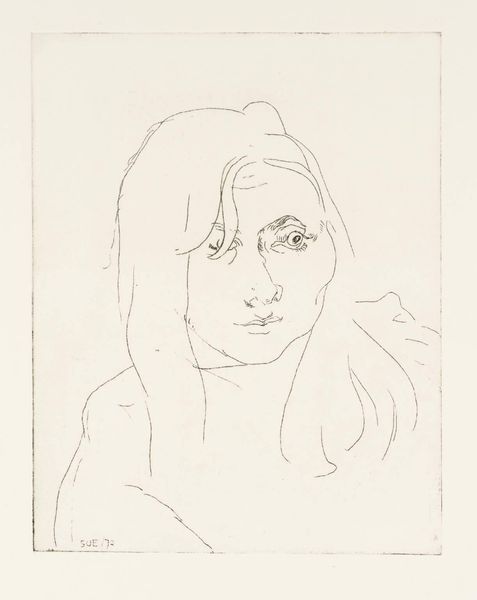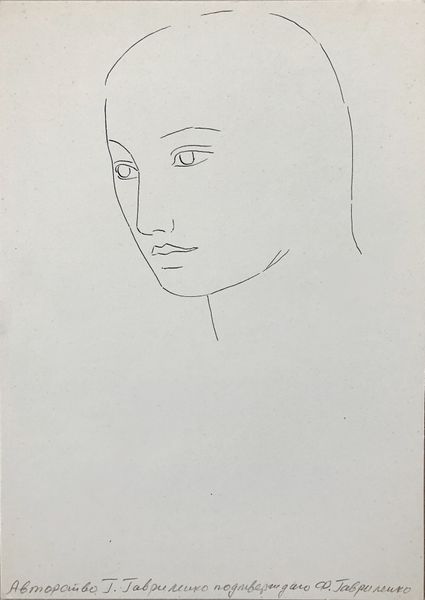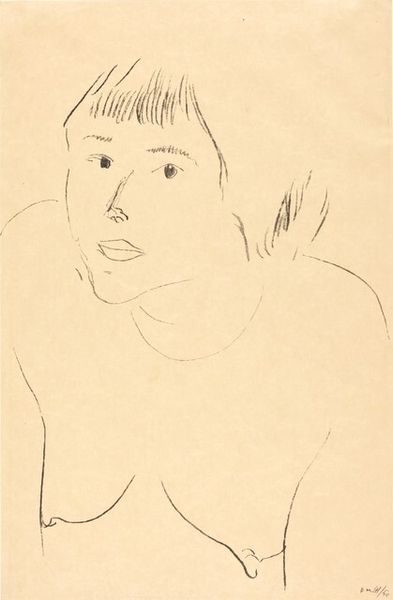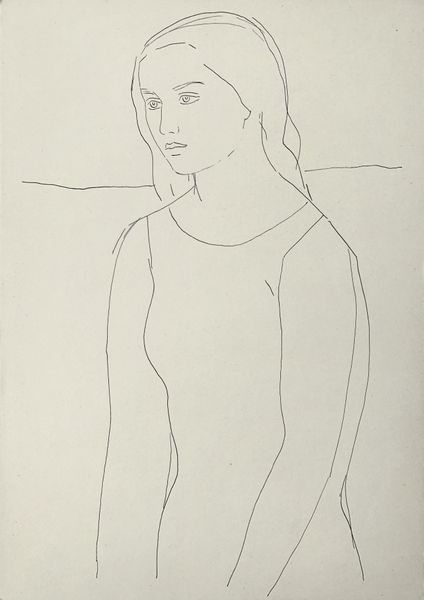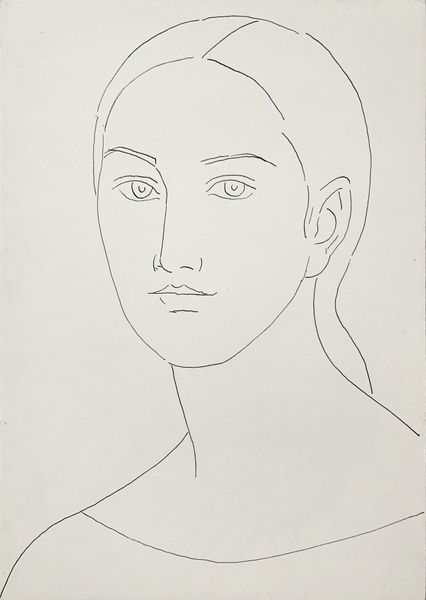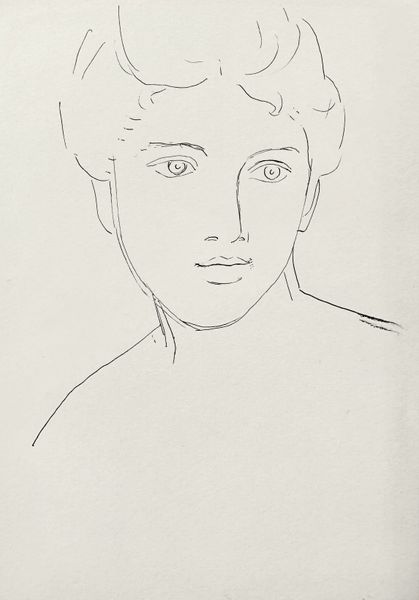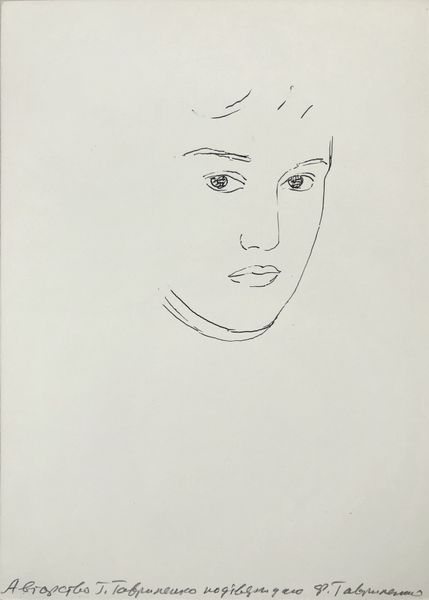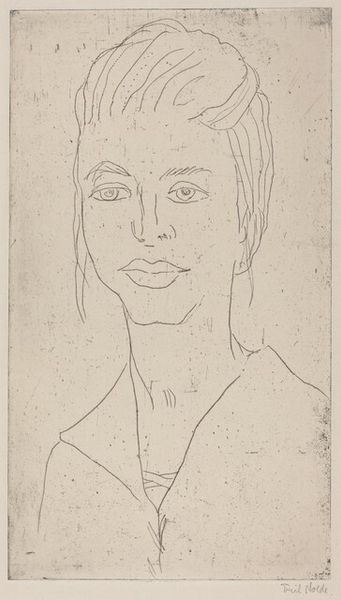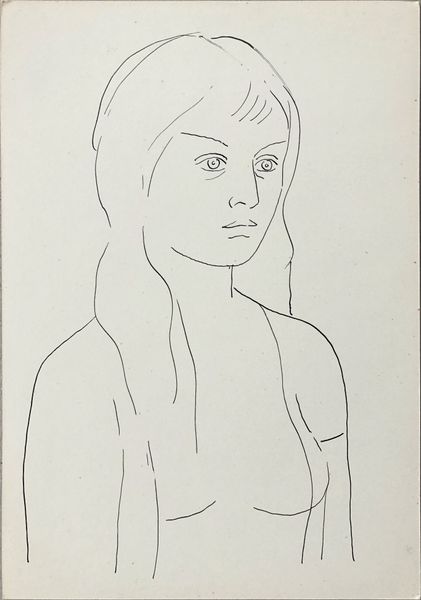
drawing, print, pencil
#
portrait
#
drawing
#
cubism
# print
#
pencil sketch
#
figuration
#
portrait reference
#
character sketch
#
pencil
#
portrait drawing
Copyright: National Gallery of Art: CC0 1.0
Curator: What strikes you first about this portrait, Face with Fringe by Henri Matisse? Editor: Its stark simplicity. Like a memory barely there, rendered with such restraint. Almost unfinished, and yet, intensely present. Curator: Made in 1913, it exemplifies Matisse’s exploration of line and form, reflecting broader trends in art like Cubism, particularly in its reduction to essential elements. Editor: Cubism, huh? I see it, but it's got this incredibly gentle quality. Those tentative lines, they're searching, aren’t they? Almost shy, in a way. And the fringe...like dark exclamation point on that high forehead. Curator: It's fascinating how Matisse captures character with such minimal detail. Prints such as this allowed his experiments with line and form to be more widely accessible, influencing younger artists, for example. Editor: Right, it demystifies art somehow, doesn’t it? Makes you feel like you could almost, maybe, capture a face like that yourself. But those simple lines are deceivingly hard to pull off. There is nothing extra there. Everything counts. What do you think this piece says about how we view portraiture in that time? Curator: The emphasis on line suggests a shift away from traditional mimetic representation towards capturing the essence of the subject, aligning with the period’s avant-garde aesthetic. Artists in that historical context broke down boundaries, reflecting on shifting perceptions and the self. Editor: Exactly! You get a feeling of seeing, the subject and maybe, in his seeing we begin to glimpse Matisse as well, reflected there in the drawing like an impression, something fleeting that nevertheless rings true. Well, thanks to him, I will never look at fringes the same. Curator: And thanks to your reflections, I feel refreshed thinking about access to art and influence of perception and experimentation. Thank you.
Comments
No comments
Be the first to comment and join the conversation on the ultimate creative platform.
